More on the New buggies for Chicago battalion chiefs
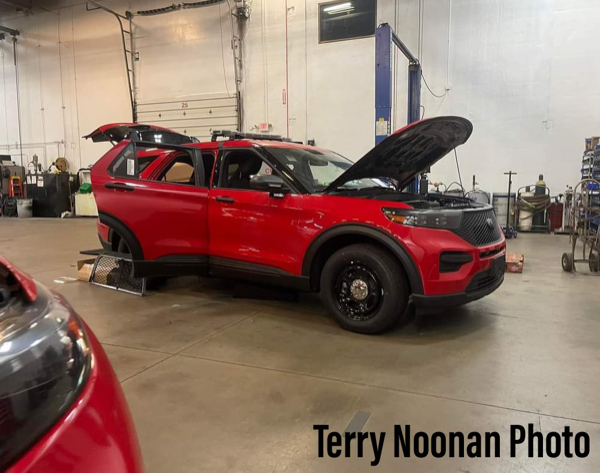
Terry Noonan photo
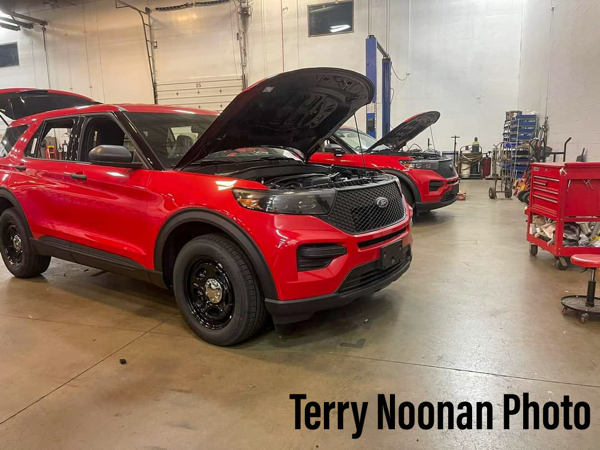
Terry Noonan photo
thanks Danny
Dec 19
Posted by Admin in Fire Service News | 6 Comments
More on the New buggies for Chicago battalion chiefs

Terry Noonan photo

Terry Noonan photo
thanks Danny
Tags: Chicago Fire Department, chicagoareafire.com, Chicagoareafire.com/blog, new battalion chief cars for Chicago FD, new buggies for the Chicago FD, new Ford Explorers for the Chicago FD, Terry Noonan
Excerpts from the ChicagoSunTimes.com:
One person was killed and another injured in a fire Saturday night that broke out just before 8 p.m. in the 5100 block of West Grand Avenue. One person was taken to Community First Medical Center, where they were later pronounced dead. The other was listed in serious condition at West Suburban Medical Center in Oak Park.
Crews have not been able to complete a search of the structure due to the building’s instability.
The cause of the fire is under investigation.
From Chicago Fire Media @CFDMedia
5153 Grand still and box two story. Rescues in progress details to follow
Two transports from the still and box on Grand. One victim very critical to community first. Second victim serious to west suburban.
(AN EMS PLAN 1 AT THE SCENE OF THE 2-11 ALARM FOR MULTIPLE INJURY. 5163 west grand. Corrected multiple addresses.
Update on 2 11 5163 west grand. The very critical patient has passed away. An adult male. Second victim is stable. Cause of fire under investigation. Building is a total loss roof is in. Final search cannot be made at this time due to building instability (Langford)
Two transports from the still and box on Grand. One victim very critical to community first. Second victim serious to west suburban.
Two transports from the still and box on Grand. One victim very critical to community first. Second victim serious to west suburban. pic.twitter.com/mXPaqlq7Dd
— Chicago Fire Media (@CFDMedia) December 19, 2021
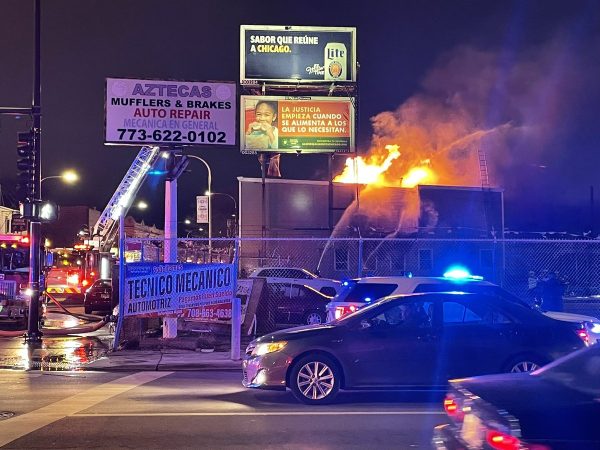
CFD Media photo
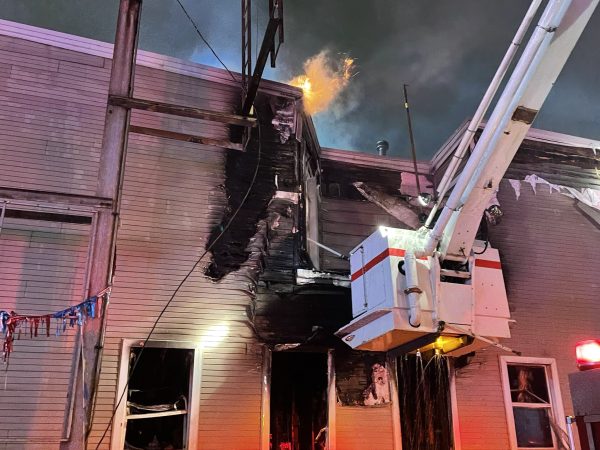
CFD Media photo
Here are some pictures from the 2-11 They were overhauling by the time I got there there will be a small video attached below with some pictures
CFD MIKE
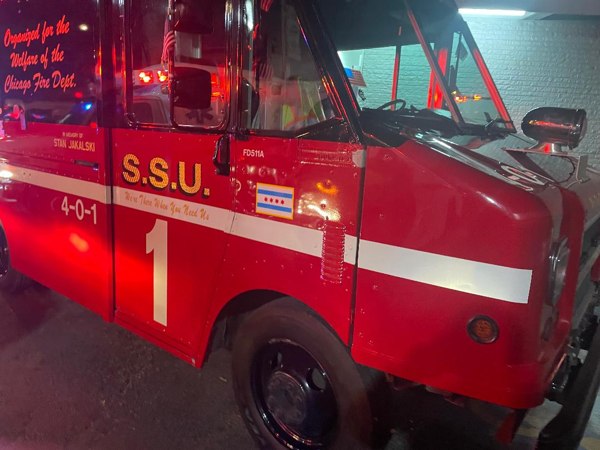
CFD Mike photo

CFD Mike photo
Tags: 2-11 alarm fire in Chicago, Chicago Fire Department, fatal fire in Chicago
Dec 19
Posted by Admin in Fire Department History | 4 Comments
From Phil Stenholm:
Another installment about History of Evanston Fire Department
KSC732 IS ON THE AIR!
At a cost of $13,000, two-way FM radios were purchased and placed into Evanston fire stations and on-board most EFD vehicles in June 1952. Paid for with funds from the 1951 bond issue, the new radio system initially had some problems with “bleed-over” interference from a local taxi cab company, but the problem was soon resolved by Motorola engineers assigned to the project.
The 20-series prefix was first used by the Evanston Fire Department after the radios were installed,in 1952, to help lessen confusion with other fire departments that were sharing the same radio frequency at that time, as well as other fire departments that might be added at a later date.
Thus Engine 1 became Engine 21, Truck 2 became Truck 22, Engine 5 became Engine 25, etc. The new combination pumper / rescue squad was designated “Squad 21,” and EFD Chief Henry Dorband used the radio call-sign “F-1,” the same call-sign he had been using on the Evanston Police radio frequency since he got his new two-way radio-equipped Mercury automobile 1951.
The Evanston Fire Department ended up on the same radio frequency as the Wilmette, Winnetka, Northfield, Glencoe, and Highland Park fire departments. While radio repeaters were used on the Chicago Fire Department’s Main and Englewood radio frequencies, they were not employed on the radio frequencies used by north suburban fire departments, so sometimes a radio transmission from one of the fire departments on the frequency might inadvertently interfere with the radio transmission of another fire department on that same frequency.
The Evanston Police Department’s base-station radio-transmitter received the FCC-assigned call-sign KSA580 when it was placed into service in 1951, and the Evanston Fire Department’s base-station radio-transmitter received the FCC-assigned call-sign KSC732 when it was placed into service in 1952.
The base-station radio-transmitter at Station # 1 was known as “KSC732 – the desk,” or simply “732 – the desk.” The radio-transmitter at Station # 2 was KSC733, the radio-transmitter at Station # 3 was KSC734, and the radio-transmitter at Station # 4 was KSC735. The radio-transmitter at Fire Station # 5 received the FCC-assigned call-sign KSD841 when the station opened in 1955.
The EFD’s radio system was tested twice a day, once at 0800 hours, and then again at 2000 hours, with each station having to acknowledge receipt of the test by stating its FCC-assigned call-sign. A radio test could be delayed if one or more companies were en route to a call, or even canceled if a major incident was in progress.
Each EFD company officer was responsible for keeping track of the current status of all of the other companies of the same type (engine or truck). For example, the officer of Engine Co. 24 would need to know whether or not Engine Co. 23 was in service or out of service, because it could change Engine Co. 24’s first-due or second-engine response area. Company officers would have to acknowledge over the radio whenever another company’s status changed. If acknowledging from a fire station, the station’s FCC-assigned call-sign — or sometimes just the last three numbers of the call-sign — was used.
Both the police and fire department base radio consoles were initially located in a room on the second floor / south side of the police station, in close proximity to the stairway that led from the police station to Fire Station # 1. The radio consoles were later relocated to a room on the first floor / northeast side of the police station, next to the police complaint desk and on the far opposite side from Station # 1.
Both the police and fire department radios were operated by civilian communication operators who were under the supervision of a police sergeant. Technically, half of a communication operator’s salary was paid by the police department, and half was paid by the fire department. Prior to 1975, communication operators were exclusively male, and in some cases were retired police officers or retired firefighters. Multi-tasking, speaking clearly, and having a good memory was useful. Typing skill was absolutely NOT a requirement.
All fire calls, inhalator calls, and details were broadcast over the EFD radio, with communication operators usually announcing fire and inhalator calls, automatic alarms, car fires, trash fires, etc, and a firefighter at the desk at Station # 1 typically announcing a non-emergency engine or truck company detail, such as a residential lock-out, a gas-wash, or an odor investigation.
A four-second long horn-type alert-tone was broadcast immediately prior to announcing a fire call, inhalator call, or detail, as well as for the twice-daily radio test. This horn tone was unique to the EFD and was activated by pushing a button similar to a doorbell. It couldn’t be stopped once it was started, and it covered all voice transmissions that might be in progress. There were only two activation buttons for the horn, one located in the Evanston Police radio room, and the other at the desk at Fire Station # 1.
The communication operator did not assign EFD companies to a call. Rather, the communication operator would simply announce the call-type and location twice, and then state the time and the EFD’s radio call-sign. Then the radio system would turn into a party-line conference call. Companies that were due to respond were expected to acknowledge receipt of the call over the radio, and it was up to the platoon commander to make sure that the proper companies had acknowledged and were responding.
This somewhat arcane aboriginal dispatch procedure that dated back to 1952 was not changed until 1982!
Tags: chicagoareafire.com, Chicagoareafire.com/blog, Evanston FD Chief Henry Dorband, Evanston Fire Department history, History of Evanston Fire Department, Phil Stenholm
You are currently browsing the archives for Sunday, December 19th, 2021

For the finest department portraits and composites contact Tim Olk or Larry Shapiro.
Arclite theme by digitalnature | powered by WordPress